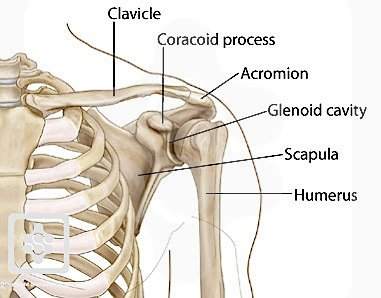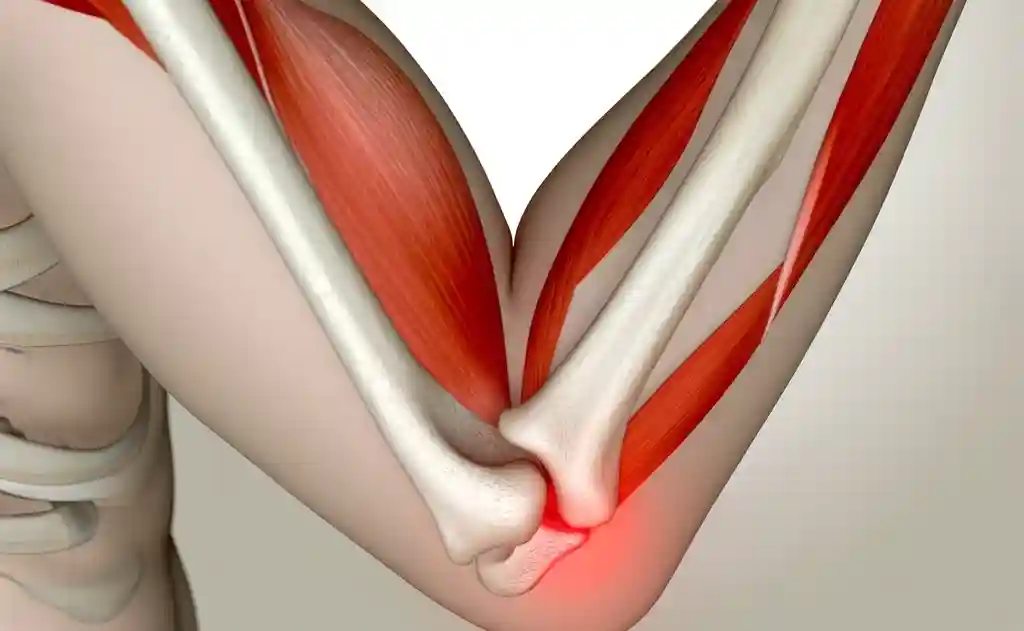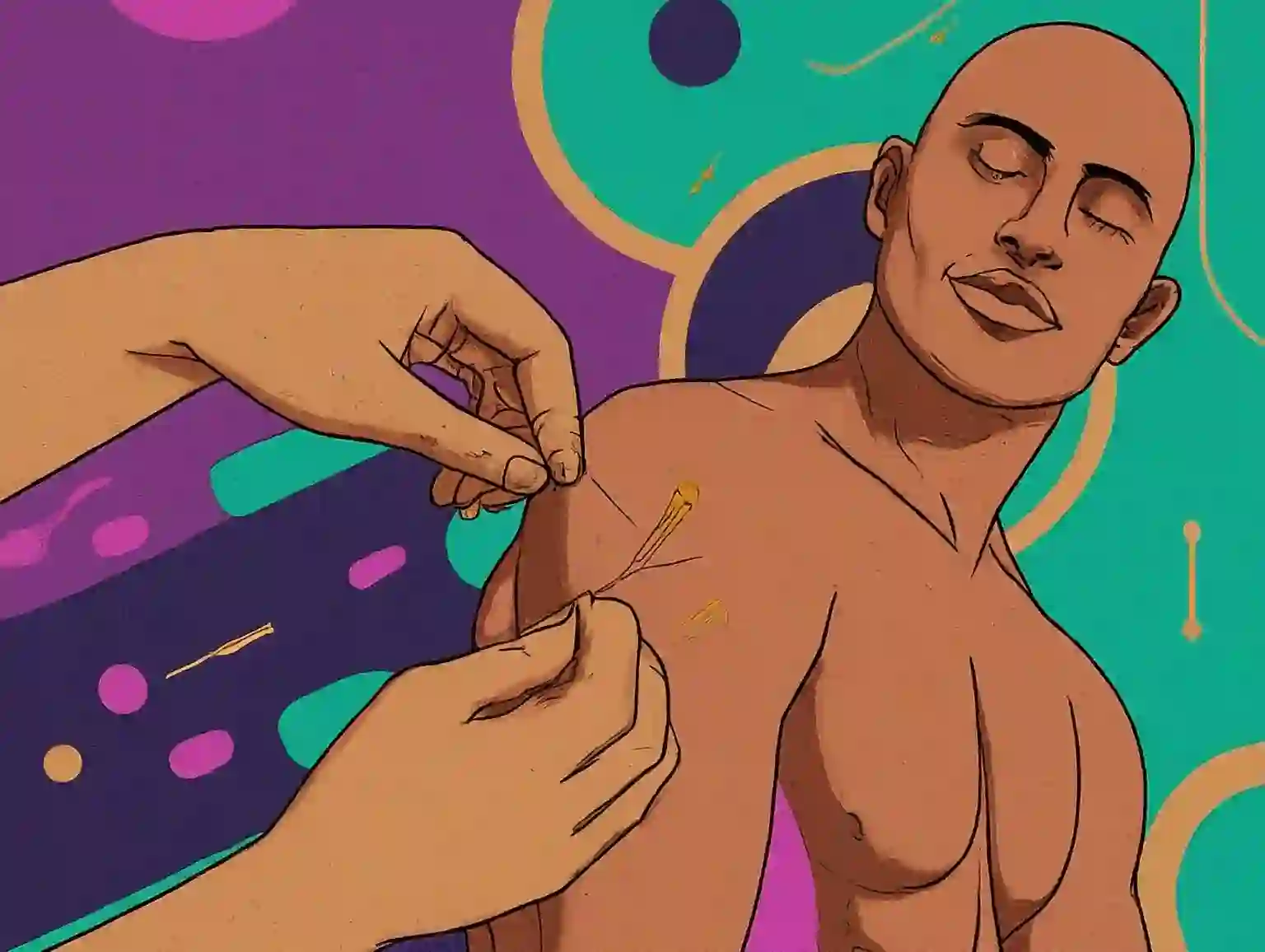5 Shoulder Exercises For A Winged Scapula

Do you have a winged scapula?
A four-week motor control training program for winged scapula can significantly reduce pain and improve functionality.
Robust shoulder blades form the cornerstone of shoulder stability. If your shoulder blades feel loose and unstable, it indicates the necessity for strengthening the lower trapezius, middle trapezius, and serratus anterior muscles. These muscles need to be not only stronger but also stable, firing at the correct timing.
Advanced Posture Exercises For Your Rounded Upper Back
Address your shoulder instability through:
- Strengthening:
- Focus on the lower trapezius, middle trapezius, and serratus anterior muscles.
- Stretching:
- Target the shoulder blade muscles, including the pectoralis minor, levator scapula, and upper trapezius.
While these muscles may sound complex, you’ll find that the exercises are manageable.
1st Stage: Muscle Control and Strength
1. Sharapova Exercise For Winged Scapula
Named after Maria Sharapova, the former #1 tennis player who reportedly resolved a shoulder problem with this exercise. This routine targets the serratus anterior, middle trapezius, and lower trapezius muscles, along with crucial stabilizing muscles like the infraspinatus and teres minor, essential for balancing the larger chest muscles.
Instructions:
- Assume a plank position against the wall, with your arms shoulder-width apart. Place a band/Theraband around your wrists.
- Ensure your lower back and mid-back are straight, avoiding arching.
- Actively push your elbow into the wall, causing your shoulder blade to move forward.
- Gradually move your arms up in the shape of a small “C,” working towards almost straightening your elbows.
- Maintain active elbow pressure against the wall throughout, forming a continuous “C” shape.
- Return to the starting position while executing reverse “C” movements.
- Perform 3 sets of 5-8 repetitions.
2. Overhead Carry For Winged Scapula
Engage the serratus anterior, lower trapezius, and upper trapezius muscles with the overhead carry. To minimize upper trapezius activation, focus on bringing the bottom of your shoulder blade forward.
Warning: Some individuals may lack mid-back mobility for this exercise. If you cannot raise your hands directly above your head, consult with your chiropractor or physiotherapist before attempting. Begin with a lightweight.
- Activate your core by pulling your belly button to your spine and tightening your lower back muscles.
- Start with a kettlebell or dumbbell on the ground, bringing them up to chest level.
- Lift the weight above your head with your elbow straight.
- Move the bottom of your shoulder blade forward to reduce upper trapezius activation.
- If stable, walk forward for up to 10 yards or approximately 10 meters.
- Repeat the sequence 3 times on each hand.
3. “Y” Wall Slides For Winged Scapula
This effective scapular exercise enhances scapular function by targeting the serratus anterior, middle trapezius, and lower trapezius muscles.
- Assume a plank position against the wall, keeping your arms shoulder-width apart.
- Ensure your lower back and mid-back maintain a straight position without arching.
- Actively push your elbow into the wall, prompting your shoulder blade to move forward.
- Gradually move your arms up into the shape of a “Y” until your elbows are almost straight.
- Throughout the movement, sustain active pressure on the elbow against the wall.
- Return to your starting position.
- Complete 3 sets of 5-8 repetitions.
4. Banded Wall Slides For Winged Scapula
This exercise targets the serratus anterior and stabilizing muscles of the shoulder.
- Assume a plank position against the wall, utilizing a Theraband or elastic band around both wrists, maintaining arms at shoulder-width apart.
- Ensure your lower back and mid-back maintain a straight position without arching.
- Keep your arms consistently spaced apart.
- Actively push your elbow into the wall to prompt your shoulder blade forward.
- Gradually move one hand up a little and then the other.
- Focus on feeling fatigue in the shoulder blade, not the upper trapezius.
- Complete 3 sets of 5-8 repetitions.
5. Reverse V Raises For Winged Scapula
- Engage your core by drawing your belly button toward your spine without extending your lower back.
- Begin in a prone position with the top of a long foam roll just below your sternum.
- Place a towel under your head to prevent it from touching the floor.
- Lift your head to a neutral (horizontal) position without extending your lower back.
- Position your hands palm down on the floor.
- Bring the shoulder blades down and back toward the wall closest to your feet.
- Lift your hands with thumbs up.
- Raise your head for 2 seconds, bring your shoulder blades down for 2 seconds, and hold the arms up for 4 seconds.
6. Advanced Reverse V Raises For Winged Scapula
Perform the same steps as mentioned above, but elevate the challenge by going on your toes and straightening out your knees. This action automatically engages your quads, glutes, and calves.
Note: The exercises executed on the wall are termed closed-chain exercises as they involve a solid object. Closed-chain exercises, such as squats, enhance stability, contributing to the dynamic stability of your shoulder during motion.
2nd Stage: Stretching And Conscious Muscle Control
CP Pec Minor Stretch For An Unstable Shoulder Blade

CP Pec Minor Stretch for An Unstable Shoulder Blade
This exercise aims to stretch the pectoralis (pec) minor at its attachment point to the bone. Additionally, you can target the entire muscle by working the surrounding area to the left and right of the bone, covering about 5-7 cm or 2-3 inches.
Whether sitting or standing, follow these steps:
- Place your thumb or two fingers on your coracoid process, as illustrated above. Locate the coracoid process by feeling for a bone just beneath the collarbone, situated about 2/3 of the way laterally from the start of the sternum/breastbone.
- Position your thumb or fingers on the pec minor muscle overlying the coracoid bone, applying downward pressure toward the floor.
- While maintaining this pressure, move your shoulder up and backwards toward the wall behind you.
Upper Trapezius Stretch For Winged Scapula
These muscles, often tight, can hinder the proper movement of your shoulder blade and shoulder. The following exercises are straightforward and can be done whether you are sitting or standing.
- Bring your right hand behind your back, positioning it low as if you are about to put your hand in the opposite pocket. Avoid placing your hand at the lower back curve, as that is too high.
- Gently bend your neck sideways towards the left.
- Hold the stretch for 30 seconds.
- Repeat the sequence 3 times.
Levator Scapula Stretch For Winged Scapula
- Bring your right hand behind your back, placing it low as if you are preparing to put your hand in the opposite pocket. Ensure not to position your hand at the lower back curve, as that is too high.
- Rotate your head 45 degrees to the left.
- Gently bend your neck forward, directing your chin toward your chest. Your gaze should be focused on your left thigh.
- Hold the stretch for 30 seconds.
- Repeat the sequence 3 times.
90 / 90 / 100 Posture Correction For Winged Scapula
Correct posture of your shoulder blade is crucial, emphasizing the significance of maintaining the right position while sitting or standing.
Correctly positioning your shoulder while keeping a bad overall posture won’t do anything for you.
- Maintain a 90-degree bend in your elbow on the armrests.
- Keep your knees at a 90-degree angle or less.
- Support an arched lower back by using lower back support, as most office chairs lack sufficient support.
- While leaning back in the chair, aim for a 100-degree angle, not 90 degrees, utilizing the lower back support and the chair’s back.
- The slight leanback at 100 degrees will naturally bring your head back a bit. Now, bring your head back a tad more toward the wall behind you.
Implementing these posture corrections will effectively position your shoulder blade and correct the shoulder instability if those muscles we addressed were the problem. If the rotator cuff muscles are involved then you need a different set of exercises.
Tell us who you think is the best Toronto Chiropractor in the comments section below. Also, tell us what you think on Facebook.
Picture Reference
- Cristian-baron-27345-Unsplash
References
- Cools AM, Dewitte V, Lanszweert F, et al. Rehabilitation of Scapular Muscle Balance: Which Exercises to Prescribe? Am J Sports Med. 2007;35(10):1744–1751.
- People with serratus anterior have problems with anterior tipping and downward rotation of the shoulder blade
- Stretching the shoulder muscles like the infraspinatus, subscapularis and
lattismus dorsi may also help.






